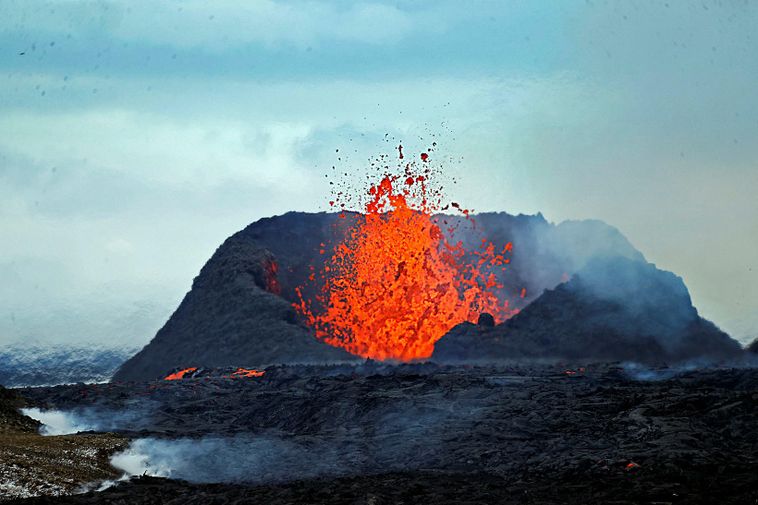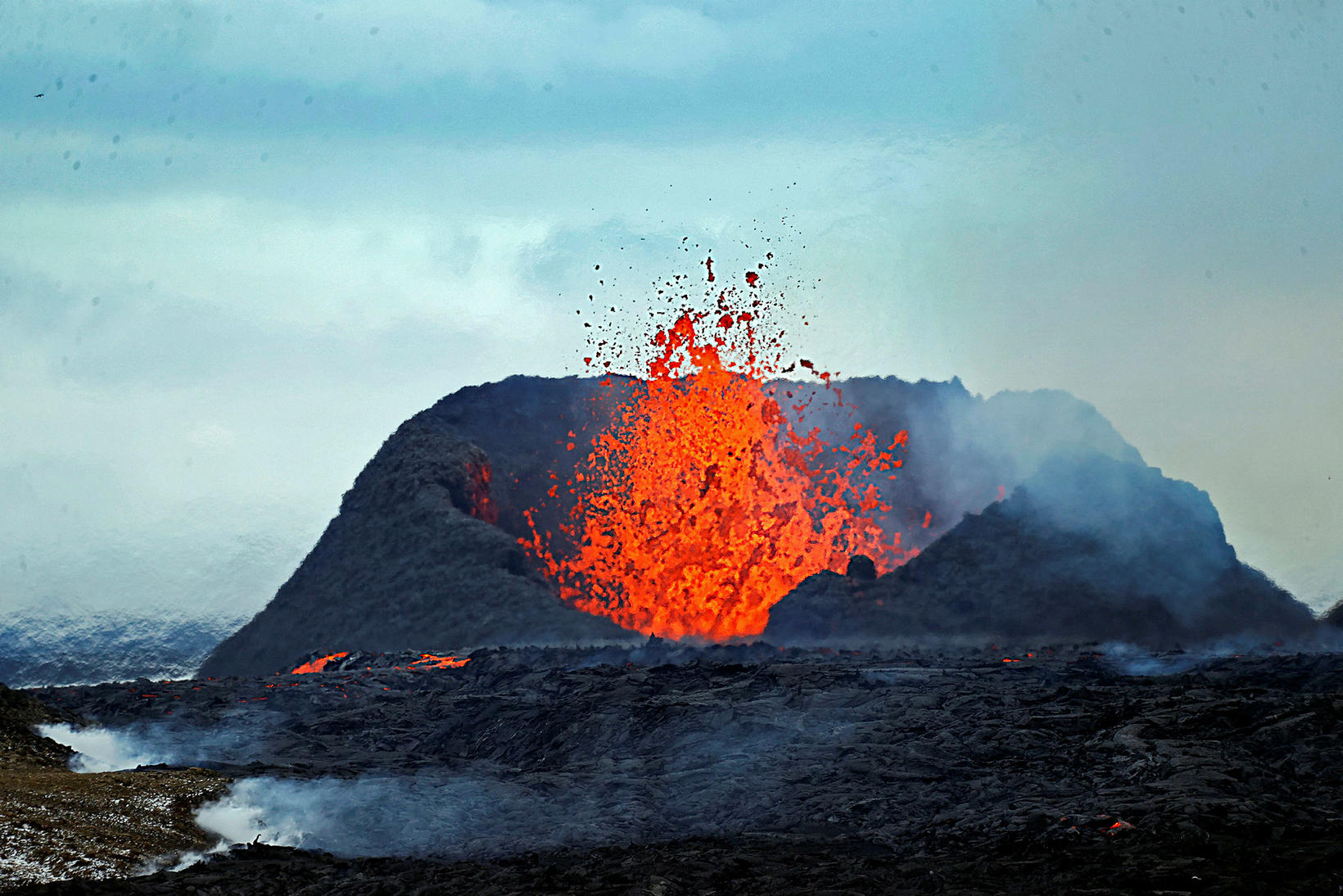There is an increased likelihood of an eruption in late November when Icelanders will be voting in the next government elections.
mbl.is/Eggert Jóhannesson
The Icelandic Meteorological Office’s new risk assessment due to the accumulation of magma in Svartsengi reckons with an increased probability of a magma run and there could even be an eruption on the Reykjanes Peninsula at the end of November.
The website of the Icelandic Met Office says that the assessment depends on the deformation data available at any given time. Should the speed of the inflation in Svartsengi change, the estimate will change accordingly.
Inflation and magma accumulation have been stable recently, and seismic activity around the Sundhnúkagígar crater row remains low. Several small earthquakes have been recorded per day.
The National Weather Service”s risk assessment remains unchanged from last week. The new risk assessment will take effect on November 12, with all things remaining unchanged.
Could be a third bigger
The next eruption could be 30 percent larger than the last eruption.
The last eruption of the Sundhnúkagígar crater row ended on September 5 and lasted for two weeks, but it was the sixth in the series since December 2023.
The eruption was the most powerful of the six eruptions or more than 60 million cubic meters. The next eruption could be up to 30 percent larger, or about 80 million cubic meters, according to Benedikt Gunnar Ófeigsson, head of deformation measurements at the Icelandic Met Office.
“We have to assume that if there is an eruption, it is very likely that it will be considerably larger than the last one. The eruptions have been growing and if the trend continues in the same way, it could become 30 percent bigger,” Ófeigsson says to mbl.is.
The eruption is not likely to threaten Reykjanesbraut Road
He adds that even if the eruption is powerful, it is unlikely that it will threaten Reykjanesbraut Road.
“It would have to be a pretty big eruption, and much bigger than we are assuming.” We still, however, need to keep this in mind and it cannot be ruled out that the Reykjanesbraut will be completely saved. There are perhaps other infrastructures that are closer, such as Svartsengi and Grindavík, but it completely depends on where the fissure opens.” The eruption fissure in the last eruption reached much further north than previous eruptions and Ófeigsson says that they are assuming that the next eruption will occur in a similar place as the last one, but possibly a bit further north although it is not likely.
Access to Grindavík has been unimpeded for over a week. Asked if he has any concerns about that, he says:
“For now it’s nothing to worry about, but when it gets closer to the previous limit, the concern could increase.” The greatest danger now is if people are walking in near the areas where there has been a lot of fissure movements.”

